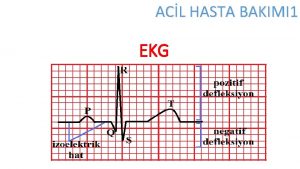Nonselective parahisian stimulation used for QRS normalization guided

- Slides: 1

Non-selective para-hisian stimulation used for QRS normalization guided by non-invasive electrical synchrony method in patients with electrical conduction disorders #83121 Authors: Logarzo Emilio 1, Ortega Daniel 2, Barja Luis 1, Paolucci Analía 1, Revollo Gerson 2, Aboy Juan 2, Mangani Nicolás 2 (1) Clinica San Camilo, Buenos Aires, Argentina (2) F. I. B. A. , Buenos Aires, Argentina Introduction: Para-hisian stimulation produces a physiological cardiac activation through normal conduction system. Frequently it is used in patients with no electrical conduction disorders. We developed an implant technique guided by non-invasive electrical synchrony using conventional screw-in leads. Non-selective para-hisian stimulation can normalize electrical conduction disorders. Synchromax is a novel device used to evaluate non-invasive cardiac electrical synchrony. It is easy to understand, fast to obtain, non-invasive and reproducible. Synchromax was analyzed in previous studies and correlated with other methods. Results Baseline clinical characterisctics Mean Age (years) 71 (± 7 years) Females 35% Males 65% 2º and 3º degree AV block associated Dislodgment Group QRS Normalization Objective: Evaluate usefulness and safety of non-selective para-hisian stimulation guided by non-invasive cardiac electrical synchrony method using conventional screw-in leads to normalize electrical conduction disorders. Materials and Methods: 421 patients with para-hisian stimulation were analyzed retrospectively. 139 patients had different intraventricular and auriculo-ventricular electrical disorders. Non-selective para-hisian stimulation guided by no-invasive electrical synchrony method (Synchromax) was performed in all cases. Synchrony index and curves were analyzed according curves chart. Type 2 curve and index between 0, 1 and 0, 4 were considered synchronous. Type 8 curve and index more than 0. 7 were considered dyssynchronous. YES NO 13% 30, 9% (28 p) 87% 2 ECG electrical disorder Patients (n=139) 1 Right Bundle Branch Block (RBBB) 44 2 Left Bundle Branch Block (LBBB) 35 3 Brugada Syndrome (BS) 8 4 Left Anterior Hemi-block (LAHB) 31 5 RBBB + LAHB 25 Synchromax method shows different types of curves which are divided into three groups: Synchronous (index value betwen 0 and 0. 4); intermediate (index value betwen 0. 41 and 0. 7); and dysynchronous (index value betwen 0. 71 and 1). A type 2 curve is for parahisian stimulation. Parahisian stimulation makes disappear electrical disorders and Brugada pattern as well. In all cases, a type 2 curve is achieved. Conclusions: Non-selective para-hisian stimulation guided by Synchromax method using conventional screw in leads solved most of intraventricular electrical disorders. It is also safe to use in patients with auriculo-ventricular electrical disorder.

